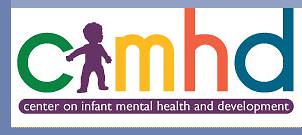The Fostering Families Project (FFP)
The Fostering Families Project (FFP) is a federally-funded, longitudinal, randomized controlled trial, involving over 200 toddlers in child welfare dependency and their caregivers. The project is a comparative effectiveness study of the Promoting First Relationships intervention (PFR) and the Early Education and Support (EES) intervention. Participant children are between 11 and 24 months of age who have recently experienced a change of care provider through actions of the child welfare/foster care system. PFR and EES interventionists work with foster, kin, and birth care providers. PFR focuses on understanding child's cues, attachment needs, and developmental level, with the goal of minimizing the impact that the experience of separations and caregiver transitions will have on developing attachment strategies and emotional regulation. EES provides caregiver resource and referral, education and support, but does not have an attachment focus.
+
This project is possible because of the strong support and collaboration of administrators and social workers at Washington State's Department of Social & Health Services Children's Administration. This project is unique in that we intervene as early as possible after a young child with a developed attachment relationship has experienced the loss of that caregiver, and try to follow the children and maintain the interventions even if children are moved from caregiver to caregiver several times over the course of the study. Our goal is to determine the impact that an attachment-focused intervention can have on this vulnerable population, during an extremely stressful time, and at a crucial period in development.
Stress Regulation in Foster Infants
+
This research looks at the development of the HPA axis, or “stress response system” in children who are child welfare dependency.
+
A sub-group of 50 children in the Fostering Families Project (FFP) described above will be enrolled in this study as well. We measure the children's production of cortisol, a by-product of the stress response, both pre-and post-intervention. Most infants develop a regulated stress response during their first year of life through predictable, soothing interactions with their caregivers. Normal stressors, like a diaper change or a doctor's visit, occur daily in the lives of infants and toddlers. When their stress response system is activated, interactions with their caregivers allow them to become calm and return to a normal baseline level of cortisol production. After the first year, their stress response system begins to achieve this response with less interaction, resulting in a regulated response to stressors. Extreme or repeated stress without the consistent support of a caregiver may leave a child with a stress response system that is either hyper-responsive or under-responsive. Our hypothesis is that an intervention that focuses on attachment will help the stress response of foster children to become better regulated, and that improved HPA functioning will be related to improved developmental, behavioral, and emotional outcomes.
Two projects described on the Center on Infant Mental Health and Development site. Promoting First Relationships is another project, one that I have been a beneficiary of. The materials form a basis for my present work with young children. CIMHD is associated with the University of Washington School of Nursing. So close at hand! -gw

No comments:
Post a Comment